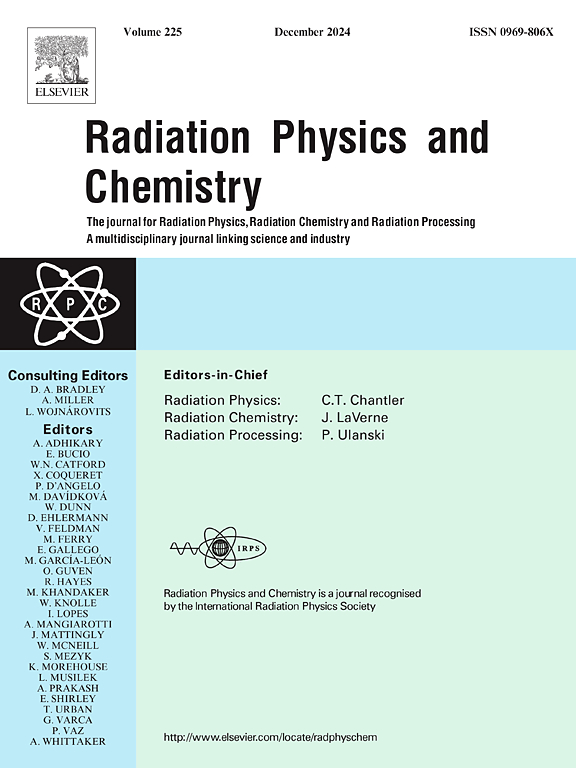The influence of electron beam (e-beam) irradiation upon anhydrous and hydrated quercetin
IF 2.8
3区 物理与天体物理
Q3 CHEMISTRY, PHYSICAL
引用次数: 0
Abstract
The quercetin belongs to natural flavonoid group found in plant pigment. It is well known their antioxidant proprieties and potential health benefits. By the other hand, the high energy electron beam processing is in trend for their usage in food preserve, sterilisation or material processing. The objective of this paper is to assess the impact of high energy electron beam irradiation on two flavonoids such as anhydrous and hydrated quercetin in solid state. The samples were irradiated to high energy electron beam up to 400 kGy, to investigate the physicochemical characteristics of the compounds. The studied compounds present biochemical importance (anhydrous quercetin, QA and quercetin hydrated, QH), and dehydration, fusion and decomposition processes arising from heating were revealed from the recorded thermal profiles in the temperature range (30–900)°C, using a coupled thermogravimetry (TG) and differential scanning calorimetry (DSC). Morphology of these compounds was observed by scanning electron microscopy (SEM) and microstructural identification by the X-ray diffraction analyses (XRD). In the range of doses up to 50 kGy, quercetin was found to show high radiochemical stability. A complex characterisation and discussion about high energy electron beam irradiation effects upon the physicochemical properties and thermal stability of studied quercetins was performed.

电子束辐照对无水和水合槲皮素的影响
槲皮素属于植物色素中的天然类黄酮。众所周知,它们的抗氧化特性和潜在的健康益处。另一方面,高能电子束加工技术在食品保鲜、灭菌、材料加工等方面的应用也有发展趋势。研究了高能电子束辐照对固体状态下无水槲皮素和水合槲皮素两种黄酮类化合物的影响。将样品辐照到高达400 kGy的高能电子束下,研究化合物的物理化学特性。所研究的化合物具有重要的生化意义(无水槲皮素,QA和水合槲皮素,QH),并且使用耦合热重法(TG)和差示扫描量热法(DSC)从温度范围(30-900)°C的记录热分布中揭示了加热引起的脱水,融合和分解过程。通过扫描电子显微镜(SEM)和x射线衍射分析(XRD)对化合物的形貌进行了观察。槲皮素在50kgy的剂量范围内显示出很高的放射化学稳定性。对高能电子束辐照对槲皮素的理化性质和热稳定性的影响进行了复杂的表征和讨论。
本文章由计算机程序翻译,如有差异,请以英文原文为准。
求助全文
约1分钟内获得全文
求助全文
来源期刊

Radiation Physics and Chemistry
化学-核科学技术
CiteScore
5.60
自引率
17.20%
发文量
574
审稿时长
12 weeks
期刊介绍:
Radiation Physics and Chemistry is a multidisciplinary journal that provides a medium for publication of substantial and original papers, reviews, and short communications which focus on research and developments involving ionizing radiation in radiation physics, radiation chemistry and radiation processing.
The journal aims to publish papers with significance to an international audience, containing substantial novelty and scientific impact. The Editors reserve the rights to reject, with or without external review, papers that do not meet these criteria. This could include papers that are very similar to previous publications, only with changed target substrates, employed materials, analyzed sites and experimental methods, report results without presenting new insights and/or hypothesis testing, or do not focus on the radiation effects.
 求助内容:
求助内容: 应助结果提醒方式:
应助结果提醒方式:


